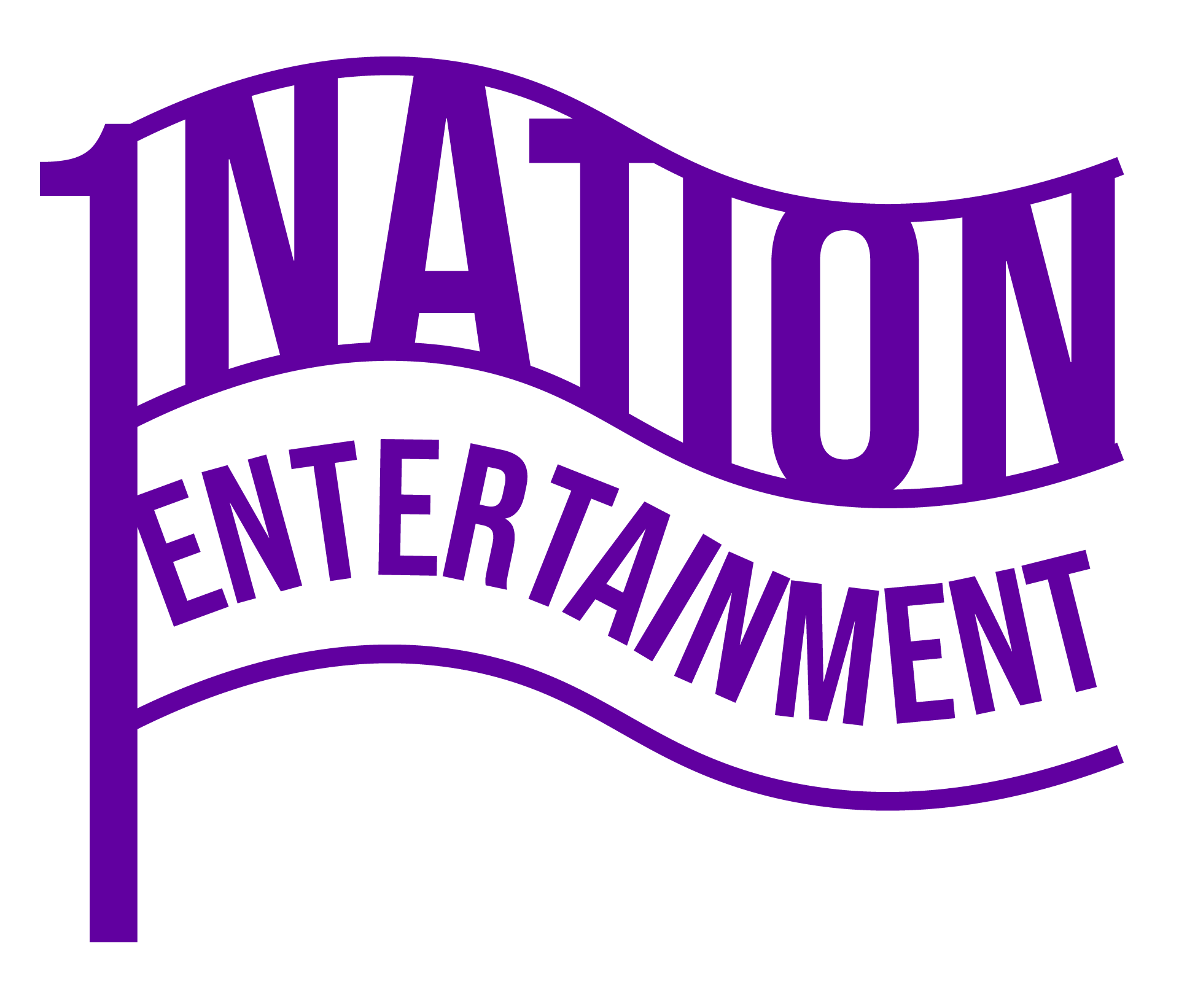Entertainment has always been a dynamic and ever-evolving landscape, reflecting the changing tastes, technologies, and societal shifts of our times. As we look ahead to the future of media and entertainment, it’s clear that the industry is undergoing a transformative phase driven by advancements in streaming platforms, emerging technologies, and shifting consumer preferences. From the rise of virtual reality and augmented reality to the dominance of subscription-based models and the growing influence of global cultures, the entertainment world is brimming with innovation and opportunities. This article delves into the latest trends shaping the entertainment industry, exploring how traditional media is competing with digital platforms, the role of artificial intelligence in content creation, and the challenges faced by media organizations in an increasingly competitive landscape. Stay tuned to discover how these trends are reshaping the way we consume entertainment and what they mean for the future of media.

The Latest Evolution in Entertainment
The entertainment landscape has undergone a transformative shift with the rise of immersive technologies. Virtual Reality (VR), Augmented Reality (AR), and Mixed Reality (MR) are revolutionizing how we engage with entertainment, moving beyond traditional screen-based experiences.
Virtual Reality (VR)
VR offers unparalleled immersive experiences, allowing users to step into virtual worlds. Whether attending a concert, playing games, or exploring fictional realms, VR provides a sensory-rich environment that feels completely real. Platforms like 1 Nation Entertainment highlight the growing popularity of VR in music and theater, showcasing how it redefines live experiences.
Augmented Reality (AR)
AR enhances the physical world with digital overlays, creating hybrid environments. Users can interact with virtual objects in real-time, whether playing games, accessing information, or engaging in creative projects. AR is particularly impactful in gaming and interactive art, offering new ways to tell stories and connect with audiences.
Mixed Reality (MR)
Mixed Reality combines elements of both VR and AR, creating a blend where digital and physical worlds coexist. MR is ideal for live events, allowing performers to interact with virtual elements while still appearing in the real world. This technology is transforming fields like education, gaming, and performing arts.
Examples of Modern Entertainment Applications
- Virtual Concerts: Artists use VR to create intimate, interactive performances from anywhere in the world, blurring the lines between live and virtual experiences.
- Interactive Gaming: AR and MR are redefining gaming by merging physical spaces with digital ecosystems, offering players unprecedented levels of immersion.
- Cultural Experiences: Museums and exhibitions are bringing history to life through AR, letting visitors explore artifacts and narratives in innovative ways.
The Role of Platforms Like 1 Nation Entertainment
Platforms such as 1 Nation Entertainment serve as hubs for discovering the latest trends in entertainment technology. They provide in-depth analysis, reviews, and updates on emerging tools like VR, AR, and MR, helping enthusiasts stay informed and connected with the entertainment community.
As these technologies continue to evolve, they promise to unlock new possibilities, pushing the boundaries of what entertainment can be. From immersive concerts to interactive art installations, the future of entertainment is increasingly defined by innovation and audience engagement.
Most Popular Forms of Entertainment Today
The modern entertainment landscape is diverse, offering a wide array of options to suit every taste. Here are some of the most popular forms of entertainment today:
- Music : Music remains a dominant form of entertainment, accessible through various platforms and seamlessly integrated with other media. It continues to top the charts in many markets, reflecting its universal appeal.
- Streaming Services : Platforms like Netflix, Spotify, and Amazon Prime have revolutionized how people consume entertainment, offering on-demand access to movies, TV shows, and podcasts.
- Video Content : YouTube and short-form video platforms like TikTok have become central to entertainment consumption, featuring a vast library of content ranging from comedy to educational videos.
- Gaming : Both traditional console games and esports have gained massive popularity, attracting millions of fans worldwide and creating a vibrant community around competitive play.
- Live Events and Concerts : The return of live performances and festivals has reinvigorated the entertainment scene, with fans eagerly attending events by their favorite artists.
These forms of entertainment cater to a broad audience, reflecting the evolving preferences of consumers. Whether it’s the immersive experience of music, the convenience of streaming, or the interactive nature of gaming, there’s something for everyone.
Explore more insights and trends in the entertainment industry by visiting 1 Nation Entertainment , your go-to source for updates and analysis in the world of music and entertainment.

What is the trend in the entertainment industry 2025?
The entertainment industry in 2025 is experiencing a transformative phase driven by technological advancements and shifting consumer preferences. Here are the key trends shaping the future of entertainment:
1. Artificial Intelligence and Generative AI
Artificial intelligence and generative AI are poised to become integral to the media and entertainment landscape. These technologies are revolutionizing content creation, personalized experiences, and real-time interactions. AI-driven tools are enabling the creation of hyper-realistic visuals, tailored recommendations, and immersive storytelling.
2. Rise of Streaming Platforms and On-Demand Content
Streaming platforms continue to dominate the entertainment industry, with services like Netflix, Disney+, and Amazon Prime investing heavily in original content. The competition is heating up, driving innovation in content quality, variety, and accessibility. Audiences are increasingly favoring niche content that caters to specific demographics and interests.
3. Immersive Experiences Through Virtual Reality (VR) and Augmented Reality (AR)
Virtual reality and augmented reality are redefining how people consume entertainment. From virtual concerts and gaming experiences to interactive movies and virtual tours, these technologies are creating unprecedented engagement opportunities. Major tech companies and entertainment giants are investing heavily in VR hardware and software to capture this growing market.
4. Diversity and Inclusivity in Content Creation
Entertainment content is becoming more inclusive, reflecting diverse voices and stories. Creators are leveraging social media and digital platforms to amplify underrepresented narratives. This shift is not only enriching the industry but also resonating with global audiences seeking authentic representation.
5. Sustainability in Entertainment Production
Sustainability is becoming a key focus for entertainment studios and production houses. From reducing carbon footprints to incorporating eco-friendly practices, the industry is aligning with global efforts to combat climate change. Consumers are also demanding more sustainable options, pushing the industry toward greener production methods.
6. Gaming and Esports Integration
Gaming continues to grow in popularity, with esports becoming a significant cultural phenomenon. Major brands are partnering with gaming leagues and influencers to reach younger audiences. The convergence of gaming and traditional entertainment is creating new revenue streams and fan engagement opportunities.
7. Challenges and Adaptations
The entertainment industry faces challenges such as content oversaturation and audience fatigue. To stay competitive, creators must continuously innovate and deliver fresh, engaging content. This requires a deeper understanding of audience needs and preferences, further driving the industry’s evolution.
These trends underscore the dynamic nature of the entertainment industry in 2025, with technology, diversity, and sustainability leading the charge. The industry is expected to continue surprising us with innovative ways to entertain and connect with global audiences.

The Most Significant Trends Affecting the Media and Entertainment Industry
The media and entertainment industry is undergoing a transformative phase driven by several key trends. These shifts are reshaping how content is created, consumed, and distributed worldwide.
1. Rise of Streaming Platforms
Streaming services have revolutionized the industry, with platforms like Netflix, Spotify, and Disney+ dominating the market. Their rise has led to a shift in content consumption patterns, favoring on-demand, mobile-first entertainment.
2. AI and Data Analytics Integration
Artificial intelligence and data analytics are now integral to content creation and audience targeting. Algorithms personalize user experiences, recommend content, and optimize marketing strategies, enabling hyper-targeted engagement.
3. Sustainability in Production
Environmental concerns are driving the industry toward sustainable practices. From reducing carbon footprints to using eco-friendly materials, studios and creators are adopting greener production methods to align with global sustainability goals.
4. Fan Engagement Through Social Media
Social media platforms have become crucial tools for fan interaction. Artists and influencers leverage these channels to build direct connections with audiences, fostering loyalty and driving viral campaigns.
5. Virtual Reality (VR) and Augmented Reality (AR)
VR and AR technologies are transforming live events, gaming, and immersive entertainment experiences. These technologies are creating new revenue streams and enhancing audience engagement.
6. Localization for Global Markets
Content is increasingly tailored to regional preferences, even as global platforms expand their reach. This localization strategy helps cater to diverse audiences while maintaining cultural relevance.
7. Competition Between Traditional and Digital-Native Companies
Traditional media giants face stiff competition from tech-driven, digital-native companies. This dynamic is pushing innovation and accelerating the pace of industry evolution.
These trends collectively redefine the media and entertainment landscape, offering both challenges and opportunities for stakeholders across the ecosystem.
For more insights, explore 1 Nation Entertainment , your trusted source for industry updates and analysis.
What is the biggest challenge that media face nowadays?
Media companies today face a multitude of challenges in staying relevant, engaging audiences, and adapting to rapidly changing consumer preferences. Here are some of the most significant obstacles:
- The rise of digital platforms has shifted audience attention away from traditional outlets, requiring media companies to invest heavily in online presence and content distribution.
- Competition among media outlets has intensified, leading to a race for audience engagement and advertising revenue. This has forced many companies to reduce costs and innovate rapidly to stay competitive.
- Content creation has become increasingly labor-intensive due to the demand for high-quality, diverse, and timely content across multiple platforms. This has led to resource strain and operational challenges.
- Advertising revenue models are undergoing transformation, with traditional ad formats losing ground to digital alternatives. Media companies must continuously adapt their monetization strategies to remain profitable.
- Public trust in media has been eroding in recent years, with audiences demanding greater transparency and accuracy. Maintaining credibility is now more challenging than ever.
- Technological advancements, particularly in artificial intelligence and data analytics, require significant investments in talent development and infrastructure to leverage these tools effectively.
- Globalization and the rise of niche audiences mean that media companies must cater to diverse cultural and linguistic preferences, complicating content creation and distribution.
- Privacy concerns and data protection regulations impose additional costs and complexities for media organizations handling personal information of their audiences.
- Traditional revenue streams like print and broadcast advertising are declining, pushing media companies to explore new avenues such as subscription models and event-based marketing.
- Content piracy and unauthorized sharing of intellectual property threaten revenue and creative integrity, necessitating stronger copyright enforcement and security measures.
- Political polarization and societal divisions often lead to biased reporting, making it harder for media companies to maintain impartiality and balance in their coverage.
- Climate change and environmental concerns require media organizations to adopt sustainable practices, adding to operational costs and changing production methods.
- The rapid evolution of technology, especially in AI-driven content generation, poses a threat to human journalists and content creators, potentially disrupting traditional workflows.

What is the Biggest Social Media Trend at the Moment?
TikTok remains the dominant force in short-form video content, but platforms like Instagram Reels, YouTube Shorts, and even LinkedIn and Twitter Threads are closing the gap. Video content continues to dominate social media engagement.
- Video Content Optimization: Platforms are prioritizing video content due to its high engagement rates. Creators and businesses are leveraging tools like TikTok Spark Ads, Instagram Carousels, and YouTube Studio to produce high-quality videos quickly.
- AI-Powered Content Creation: AI tools like Descript, Canva, and Pictory are enabling creators to produce polished content faster. These tools are becoming essential for generating engaging videos and graphics without needing advanced editing skills.
- Interactive Content: Polls, quizzes, and live Q&A sessions are gaining popularity as they boost audience interaction. Platforms like Instagram Live and Facebook Live are seeing increased usage for real-time engagement.
- Sustainability and Social Responsibility: Brands are increasingly focusing on promoting eco-friendly products and initiatives. Social media campaigns are now often centered around causes like climate change awareness and social justice movements.
- Influencer Marketing Evolution: Micro-influencers are rising as trusted voices due to their authentic connections with niche audiences. Companies are shifting their focus from macro-influencers to smaller, more relatable influencers who offer higher engagement rates.
- Community-Building Features: Platforms are introducing features like Discord-like servers and private groups to foster deeper connections among users. This trend emphasizes the importance of building loyal communities around shared interests or causes.
- Virtual Events and Webinars: As in-person events remain limited, virtual events and webinars are becoming the go-to for networking and education. Tools like Zoom and Eventbrite are integrating more deeply with social media platforms for seamless event promotion and attendance tracking.
- Privacy and Security Concerns: Users are becoming more cautious about data privacy. Social media platforms are rolling out stricter privacy policies and giving users more control over their data sharing settings.
- Metaverse Integration: Early adopters are experimenting with metaverse-based social media experiences. Platforms like Decentraland and Roblox are allowing users to create immersive virtual worlds for events, gaming, and social interactions.
The rise of AI, the shift toward interactive and community-focused content, and the increasing emphasis on sustainability are reshaping the social media landscape. Staying ahead requires creators and businesses to adapt quickly and leverage emerging tools and platforms effectively.



